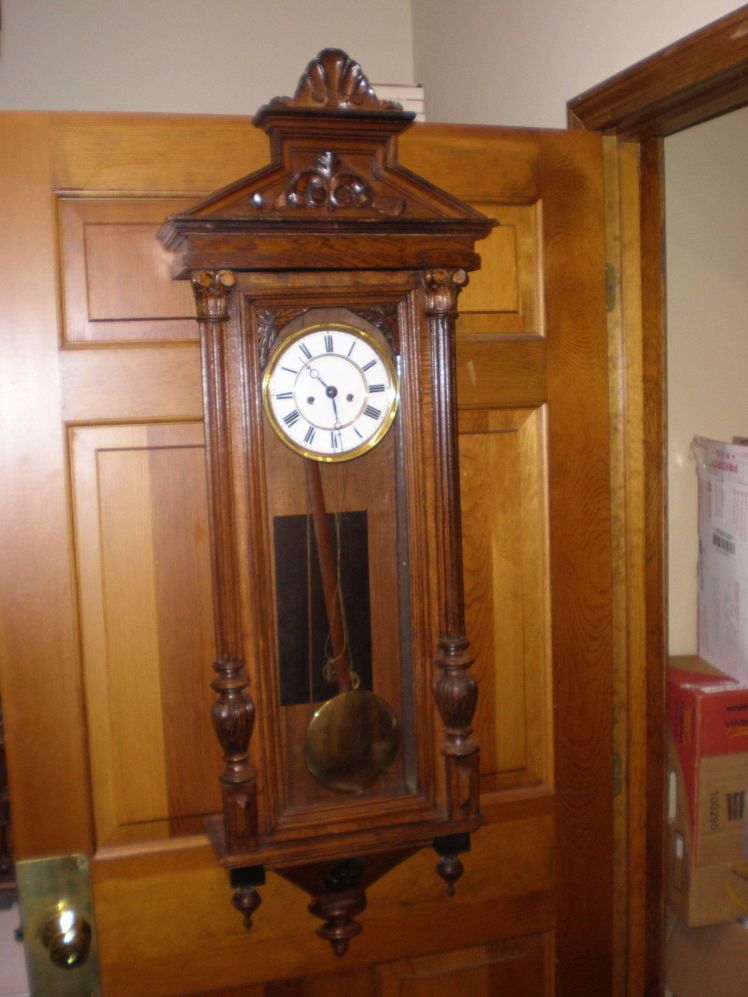![3Clock Cake1 [3086218]](https://ronaldjoiner.files.wordpress.com/2016/02/3clock-cake1-3086218.jpg?w=748)
The Gustav Becker clock which should be here in the next few days was advertised as a “project” clock so I am not expecting a perfect clock. According to the seller the strike hammer is missing although the crown, movement, weights, base, dial and pendulum are said to be original. We’ll see what else is missing when it arrives.
You can see the real clock in the following images.



Clock collectors usually pride themselves in having at least one Gustav Becker (GB) clock in their collection with earlier clocks commanding high prices. Indeed, Gustav Becker is one of the better known clock companies of the mid 1800s to 1930. In 1850 Gustav Becker opened workshops in Freiburg and Silesia, Germany. At first, Becker struggled with untrained help, but won the “Medaille d’Or” for design at the 1852 Silesia Trade Exposition. Becker incorporated that first medal and his initials, G.B., into his trademark and into many components of his clocks, from movement, mounts to wall standoffs to beat-plates and pulleys.
Once he received the award he was able to attract skilled craftsmen to his various workshops. Until 1880 most Becker clocks were weight driven regulators but spring driven clocks followed.
Becker clocks are not too difficult to identify. Serial numbers on the clocks identify the year of manufacture. The cases of these clocks reflect the ornate furniture trends of the day and range from very simple to elaborately constructed. The casework is extraordinarily well done and often incorporates hand carving. Germany has never lacked for skilled carvers and the talent of the region’s artisans is evidenced in the Becker clock cases.
In 1926 the brand as well as the later acquisitions of Lenzkirch and Thomas Haller were absorbed by Junghans. Junghans continued to produce clocks under the Gustav Becker name until the early 1930s. While GB clocks are relatively easy to identify by their serial numbers, one way to identify a GB under the Junghans name is the serial number which was restarted at 0001 after the take over.
Does frustration await me? We`ll see. I will be posting updates on this fine timepiece as I progress through the restoration process.

One thought on “Gustav Becker 2-weight regulator wall clock”
Comments are closed.